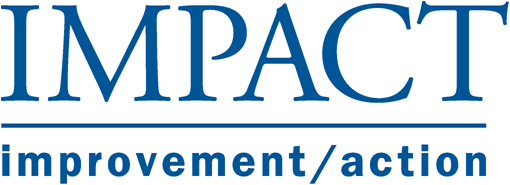Maureen Bisognano, Executive Vice President and COO
Institute for Healthcare Improvement
Maureen and Tom Nolan’s project stemmed from an initial examination of the volumes of information on theoretical work in the Cambridge IHI library, when it became evident that theories on leading transformational change were bottomless and overlapping. How do we identify which theories work best?
In order to get an idea of what leadership looks like when it is inspired to make continuous improvement Bisognano and her team investigated those healthcare organizations that are able to consistently make progress on multiple metrics while also reaching outcomes that are above the national average. The leaders of many of these healthcare organizations that served as case studies are present here today.
While conducting fieldwork investigations on site at Mercy Hospital, patient-centeredness appeared ubiquitous and was described as an “obsession from the Board to the front-line.” For instance, all patient rooms are private and a liberalized diet with 24-hour room service menu is offered in order to meet the patients’ needs and minimize waste. The dietician is stationed in the patient’s hall and acts as a personal consultant or coach and this has been both a cost- and nutrition-effective practice.
Upon rotation through some of the other case study hospitals, Lean practices were visibly integrated into the process design and flow throughout the organizations. Bisognano collected numerous photographs and examples of impressive systems connections, technology and multidisciplinary teams that were active during the investigation.
While disharmony on the senior team is the number one barrier to transformation, the opposite appears to be a contributor to success. In other words, the leadership systems that produce the best and fastest results include the following components:
- The executive team was cohesive and mission driven
- The strategic plan focused on quality, value, and financial stewardship
- Strong relationships existed among administration, nursing and medical staff
- Senior management invest their time to lead initiatives
- Teams were focused on the work itself, rather than the improvement methods or measures
- General dissatisfaction with performance creates motivation to change
- Standardization by use of guidelines and protocols

Maureen encourages us to identify where senior leadership teams are currently located on the spectrum of developmental changes (Discovery, Learning, Implementation, Outside Promotion), and reminds the roomful of leaders that ultimately, they set the tempo for change. Finally, sharing results is an important activity and Paul Levy’s blog is a great example of how the President and CEO of Beth Israel Deaconess Medical Center in Boston accomplishes this. The specific examples of activities conducted at various hospital systems can serve as valuable suggestions for other healthcare organizations that strive to achieve culture change.

No comments:
Post a Comment